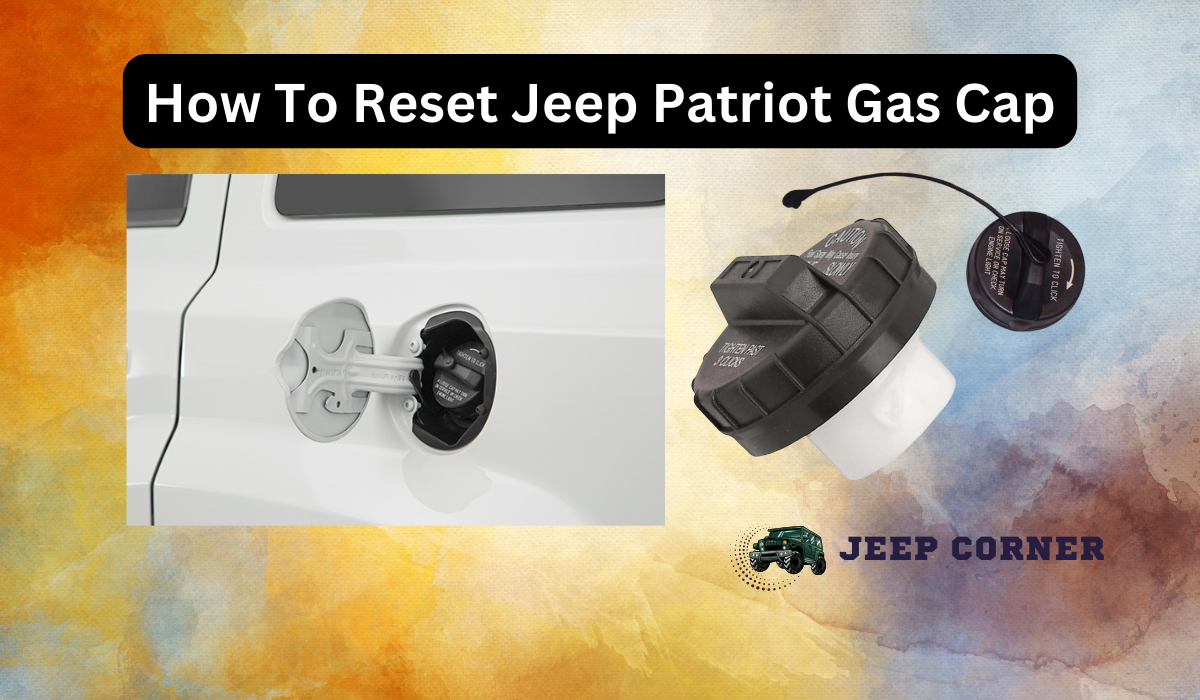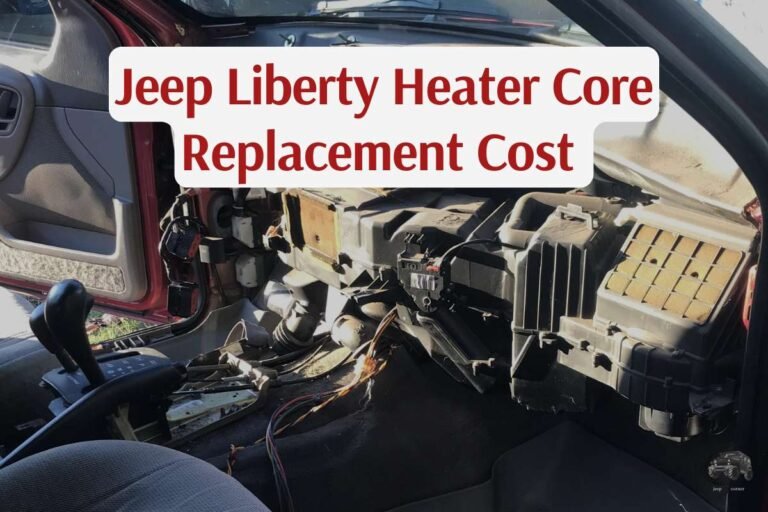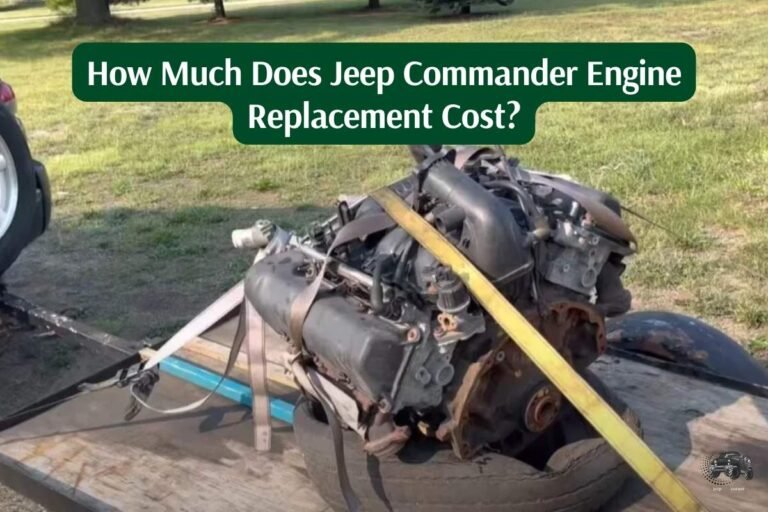How To Reset Jeep Patriot Gas Cap?
The ‘gASCAP’ warning, sometimes associated with the Check Engine Light usually pops up due to a missing or misplaced gas cap or EVAP system leakage. If you forget to put the cap after refueling or if the cap gets dislocated due to dirt or wearing, this message can pop up in your Jeep Patriot.
So, the question is how to reset Jeep Patriot gas cap? Putting back the missing cap, and properly tightening or reinstalling the cap solves the problem most of the time. However, you might need to purchase a new cap in some cases.
There are codes associated with this particular issue that requires proper addressing. Keep reading today’s article to know more.
Table of Contents
How To Reset Jeep Patriot Gas Cap?
The warning message that pops up due to fuel or gas cap issues is ‘gASCAP’. And when you check with an OBD-II scanner, the codes which usually come up are P0455 and P0457.
In the P0457, the severest leak is described, while in the P0455, a less severe leak is described in the vacuum system.
Moreover, this warning message is accompanied by the ‘check engine light’ at times. In order to reset this issue, you need to follow the following procedures
- The first thing to check is whether the gas cap is there or not.
- If not, you will have to ensure to seal the gap immediately with the help of a mechanic if possible.
- The next thing to check is if the gas cap is fastened or not.
- If not, you’ll have to fasten it manually.
- Locate the gas cap near the driver’s seat by unlocking the cap door (if you have it) after you’ve turned off the engine.
- Uninstall the gas cap by unscrewing it and then reinstall it by fastening it until you hear a ‘clicking’ noise in the correct position.
- Under the tachometer is a reset button for the odometer. Press it to turn off the message.
- Don’t forget to check the situation of the sealing threads.
- After locking the cap door, start your Jeep Patriot and go for a drive. This will let the OBD-II take care of things by default.
- If the problem persists, bring in an OBD-II scanner to reset the entire PCM and continue the drive while keeping a close eye on the dashboard.
- The message should not persist for longer than three days after you tighten the gas cap. You should visit your authorized service center if the message persists.
Although this process will be enough to reset the warning, it won’t be enough to solve the underlying causes. To avoid seeing this message, again and again, solving the main reasons is crucial.
As you go deep down this article, you will discover the signs, causes, and fixes related to the gas cap warning.
What Causes The ‘GASCAP’ Warning?
This warning was designed to pop up whenever the gas cap goes missing. If it pops despite the cap being there, it is a concerning situation. Let’s look at some of the causes that make the system warn you with such a message:
Improperly Installed Gas Cap
As I said earlier, the first thing to notice is the availability of the gas cap. If it’s there, a potential reason can be the improper installation of the gas cap. However, in some situations, the cap can be broken. This can also trigger a warning.
Solution:
To solve this, you will need to uninstall and reinstall the cap in the above-mentioned method. However, if the “clicking” noise is unheard, there won’t be any other option but to replace the entire cap.
The Cap Is Jammed With Dirt
It comes down to the fact of proper installation again. While maintaining, the gas cap can sometimes be slightly misplaced due to dirt jamming its location.
This is a tricky situation, as dirt can’t be noticed all the time. Due to the sophistication of the gas cap, even such a minor dislocation is enough to cause the PCM to warn you.
If you’re lucky enough, you will notice dirt right on the edge of the cap. And as the gas cap isn’t installed properly, the entrance of foreign bodies becomes a regularity. This is the underlying cause of the warning.
Solution:
You will have to take professional help to properly get rid of all sorts of material that’s causing the gas cap to be jammed.
A Worn-out Gas Cap
If your Jeep Patriot’s gas cap is worn out due to longtime usage, then the installation won’t be properly done. And this will set the warning on again. Usually, after applying all the possible fixes, a worn-out gas cap can make the issue persist. The life expectancy of a gas cap is around 50k miles.
Solution:
Check and change the gas cap after every 50k miles of usage. I know it’s a pain, but it has to be done. You can consider a modern lockable gas cap which is more secure these days.
Nevertheless, if you can open the cap door, lockable ones won’t be needed. Another thing to remember is the color of the gas cap. Here’s a table to help you with the variations:
| Color of gas cap | Percentage of ethanol in fuel |
| Black | <10% |
| Yellow | 15%-85% |
| Green | Diesel engine |
However, if a newly bought gas cap fails to solve the issue, a thorough checkup of your Jeep Patriot has to be run at a trusted dealer shop to find the real culprit.
Why Is There Gaseous Odor in My Jeep Patriot?
Whenever the cap is missing or improperly installed, you will most probably be able to smell the odor of gas from your Jeep. Broken or worn seals on the fuel cap could allow fuel vapor to emit from the filler compartment. This is one of the major signs.
Is There Any Connection Between Check Engine Light And Gas Cap?
PCMs (powertrain control modules) identify leaks in EVAP (Evaporative Emissions Control Systems) and activate the Check Engine Light when the P0457 code is present. And one of the causes of this is the loose or broken gas cap. However, other causes can also be responsible such as
- A malfunctioning hose
- A broken vacuum canister
P0455 code also pops up in case of less significant leaks. Apart from gas cap-related fixes, the other fixes you can consider are:
- Replacing damaged hoses
- Replacing the broken vacuum canister
- Maintaining a tight seal and avoiding cracks on the inlet manifold fitting
Here’s a diagram for the 2010 Jeep Patriot’s EVAP, which can be helpful:
This video can also help you big time in this regard:
Is It Safe to Drive with the ‘gASCAP’ Warning?
The first concern that comes to every driver’s mind after seeing such a warning is, “Did I forget to put the cap on after refuelling?”
Hence, immediately after the warning, you will have to park the car in a safe place and check if the fuel cap is there or not. If it’s missing, don’t even dare to drive before ensuring the sealing.
However, if the cap is there, but the message keeps popping nevertheless, the next thing to do is tighten it. If the problem persists, you can still drive but not for a long time.
Your drive should be with the intention of taking the car to a technician. And a long drive in such a scenario increases the probability of fume.
FAQs
Let’s look at some of the common frequently asked questions:
How many miles does it take to reset an EVAP code?
You will have to drive for 50 to 100 miles to give the OBD-II system the opportunity to reset any EVAP code.
How serious are EVAP codes?
EVAP problems usually do not cause damage to the vehicle. However, triggering the Check Engine light can hide significant problems if left unattended.
Conclusion
The ‘gASCAP’ warning light, alongside P0455 and P0457 codes, can turn into a real mess if not paid heed to. The functionality of the engine decreases significantly if the Check Engine Light also blinks with these.
Mostly, fixing the loose gas cap or missing gas cap issue can reset the warning. However, it’s always best to avoid such scenarios in the first place by being a little careful. So, make sure to put the cap back after each refuel. Also, ensure proper fastening and maintenance. Don’t forget to close the cap door.








